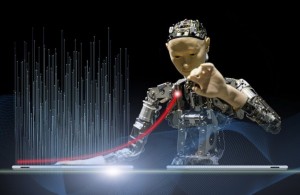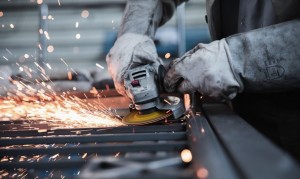With the continuous advancement of artificial intelligence technology, collaborative robots, as one of the important applications, have gradually become an important role in modern industrial production lines. By working collaboratively with humans, collaborative robots can not only improve production efficiency and quality, but also alleviate the problem of shortage of human resources and high labor intensity. At the same time, collaborative robots have the characteristics of intelligence and flexibility, which can bring more business value to enterprises.
A collaborative robot is a robot that can work with humans, often referred to as a "collaborative robot" or "collaborative robot system" (CoRobot). Compared to traditional industrial robots, collaborative robots are more flexible and safe, and can collaborate with humans to complete tasks in the same workspace.
Cobots are often equipped with a variety of sensors, such as vision, force, and acoustic sensors, that help them sense their surroundings and humans, enabling safe collaboration. Collaborative robots often use lightweight design, flexible structure, and intelligent control algorithms to adaptively collaborate with humans to achieve efficient, safe, and flexible production and manufacturing. Cobots are already widely used in electronics manufacturing, automobile manufacturing, medical care, logistics and home services.
Although collaborative robot technology has advanced and developed a lot, there are still some problems and challenges, including:
Safety issues: Although collaborative robots have been designed and manufactured with safety in mind, in practical applications, the interaction and collaboration of robots with humans can lead to accidents and injuries. Therefore, it is necessary to continue to study and optimize the safety performance of collaborative robots.
Accuracy and reliability issues: Cobots need to collaborate with humans in a real-time dynamic environment, so they need to have high accuracy and reliability. At the same time, robots need to be able to adapt to changes in the environment and tasks, maintaining stable and accurate performance.
Human-computer interaction and interface design problems: collaborative robots need to interact and communicate effectively with humans, and the interface and interaction mode of robots need to be reasonably designed to improve collaboration efficiency and comfort of human-computer interaction.
Robot programming and control problems: Collaborative robots need to be able to adapt to different tasks and environments, so they need to have flexible and intelligent programming and control capabilities. At the same time, the programming and control of robots need to be simple and easy to use to improve the popularity and application range of robots.
Cost and sustainability issues: Cobots are expensive to manufacture and maintain, which limits the scope and popularity of their applications. Therefore, it is necessary to continue to study and optimize the manufacturing and maintenance costs of collaborative robots to improve their sustainability and market competitiveness.
But I am very optimistic about the future development potential of collaborative robots. It is believed that with the continuous advancement and innovation of technology, the application range of collaborative robots in many fields will continue to expand, and become an important assistant in the field of production and manufacturing.
First of all, collaborative robots can greatly improve the efficiency and quality of production and manufacturing, and reduce production costs and labor costs. Compared to traditional robots, collaborative robots are more flexible and safe, and can collaborate on tasks in the same workspace as humans. This allows collaborative robots to be used in a wider range of fields, such as automobile manufacturing, electronics manufacturing, medical and other fields.
Second, the intelligence and adaptive capabilities of collaborative robots will continue to improve. With the continuous advancement of robot technology, collaborative robots will become more and more intelligent and adaptive. For example, robots will continuously learn and optimize their own behavior and performance through machine learning and artificial intelligence algorithms, enabling more efficient and intelligent collaboration.
Finally, as the range of applications of collaborative robots continues to expand, their manufacturing and maintenance costs will continue to decrease. This will make the application range of collaborative robots more extensive, and the market potential is more huge.
And the market for collaborative robots is very large, and robot manufacturers of different brands and countries have the opportunity to succeed in this field.
Whether it is a domestic collaborative robot or a foreign-funded brand collaborative robot, it has its own advantages and disadvantages. There may be some gaps between domestic collaborative robots and foreign brand collaborative robots in terms of technology and performance. However, domestic cobots usually have lower prices and better localized service support, which may be more attractive to some small and medium-sized enterprises.
On the other hand, foreign-branded collaborative robots have technical advantages in some aspects, such as machine vision, motion control, human-computer interaction, etc. In addition, these brands often have an extensive global customer base and marketing network, which can provide better international support and services.
In general, collaborative robots, as one of the important applications of artificial intelligence technology, have gradually become an important role in modern industrial production lines. Although the technology of collaborative robots is relatively mature, there are still challenges in business models and safety.
However, with the continuous development of technology, collaborative robots will continue to break through their own technical limitations, achieve more extensive applications, and bring more commercial value to the development of the manufacturing industry. In the future, collaborative robots will continue to exert their unique advantages to provide enterprises with more innovative solutions to make industrial production more flexible, efficient, safe and sustainable.
Post time: Mar-23-2023


